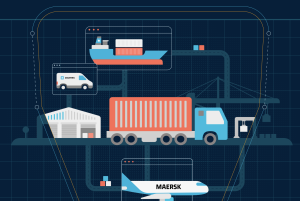 Jan-Henner Theissen, founder and managing director of procurement advisory firm, targetP! in Berlin, writes here about Supply Chain Risk Management, specifically, anticipating and preventing risks in your supply chain and creating a competitive advantage for your company.
Jan-Henner Theissen, founder and managing director of procurement advisory firm, targetP! in Berlin, writes here about Supply Chain Risk Management, specifically, anticipating and preventing risks in your supply chain and creating a competitive advantage for your company.
Contract management has evolved substantially since vendor management first started and now it is a fully-working part of a mature, modern vendor management solution. In fact, any vendor management solution needs to have contract management as its backbone because, at the end of the day, the key obligations, rights, remit and remuneration for the vendor all lie in the contract.
But this isn’t the 1990’s era of contract management when it was exciting just to have the contract in one place and you knew when it expired. Today, contract management and the software platform encompass a whole field of activities – from basic document retention, through change order management, performance management and then analytics on what is in your vendor base.
Vendor management needs this raw data and this type of engine to house, parse and extrapolate on the data within contracts. Why? Because in the 2010s the vendors got smart – like really smart – and realised that they were losing money by not making the most of their contracts. See all of the International Association of Contract & Commercial Management (IACCM) studies on losses of nine percent or greater, in contract value.
From the “customer” perspective it has become mandatory for a level playing field on which buyers understand their contracts after they are signed. Contracts are not getting easier, and we are not going back to Adam Smith’s trading principles. Vendors realised this long ago and built the machinery in their delivery to use contracts effectively. Buyers need to do the same and that is why vendor management needs contract management.
Supply Chain Risks are Diverse and Complex
Supply chain risk describes a threat that affects more than one company along the supply chain. A problem can be caused internally by one company, between two companies or by the environment of the supply chain. In general, three areas of potential supply chain risks are known:
- Operational fluctuation, for example variability, like supply and demand uncertainty or price volatility.
- Natural disasters representing earthquakes, storm tide and epidemics.
- Crises caused by humans, such as terror attacks, unethical business practices and economic crises.
The Practical Case
The company, AGCO Corporation, a global leader in the design, manufacturing and distribution of agricultural equipment, has implemented a holistic supply chain risk management approach as an incremental part of its supplier management process landscape. This comprehensive and awarded approach continuously identifies and evaluates risks along the supply chain. Thereby, a unique level of transparency is realised through monitoring most critical risk dimensions such as geopolitical, compliance & sustainability, environmental & natural and financial, as well as logistics and transportation risks (logistics hubs, such as ports, etc). The implemented risk management approach allows immediate reactive countermeasures, as well as early preventive actions.
The following goals align with the supply chain risk management approach:
- Risk mitigation and identification of potential risks
- Transparency along the whole supply chain by supporting:
- Better sourcing decisions
- Supplier strategy and
- Optimal insurance terms for supply chain interruptions
- Enforcement of compliance and the regulatory framework
In addition, the supplier risk management approach supports the global commodity management during its annual strategy formulation. Information from supply chain risk management, such as market condition information or critical sub-tier suppliers, can be used in order to derive strategic actions. For example, activities like supplier reduction, identification of alternative supply markets and suppliers, as well as continuous review of the insurance coverage of the group (“Business Interruption Insurances”) become much easier when utilising the supply chain risk management approach. You might ask yourself now, how to implement a comprehensive supply chain risk management approach?
Take the following steps to foster the implementation of SC risk management:
- Establish a transparent and efficient organisation with standardised processes, particularly for supplier risk management.
- Ensure a strong focus on the subject risk management by all hierarchical levels in the organisation: leadership group, commodity managers and local buyers. Foster a mindset of “purchasing is more than savings; purchasing is also securing value”.
- Implement a global supplier management process and support this process with web-based software as a central component of all information relating to the supply base.
- Create the role of a global responsible risk manager with a governance model for supply chain risk topics.
- Gradually enhance the structure of the risk management solution, as well as increase the network of connected information sources.
- Design the interaction of risk management, commodity and supplier management.
- Integrate risk management in the purchasing strategy and in future award decisions.
Key lessons learned:
Supply chain risks become more and more relevant in global supply chains. The presented case highlights that companies can prepare for and prevent risks, but they need to focus on key points to be successful.
- First, make supply chain risk management a strategic initiative within your Purchasing & Supply Chain strategy.
- Second, ensure that your organisation is prepared to understand and manage risks when they inevitably occur. Remember: systems cannot replace people!
- In the next step, select the right concept and system and a potential provider and/or content partner for your individual case.
- Later, ensure the organisational integration within your company by using intense training and communication events to drive awareness and education.
- Finally, be flexible – risk is dynamic and flexible, so learn to think and act in a similar manner in order to safeguard your company and your supply chain against potential risks.



























